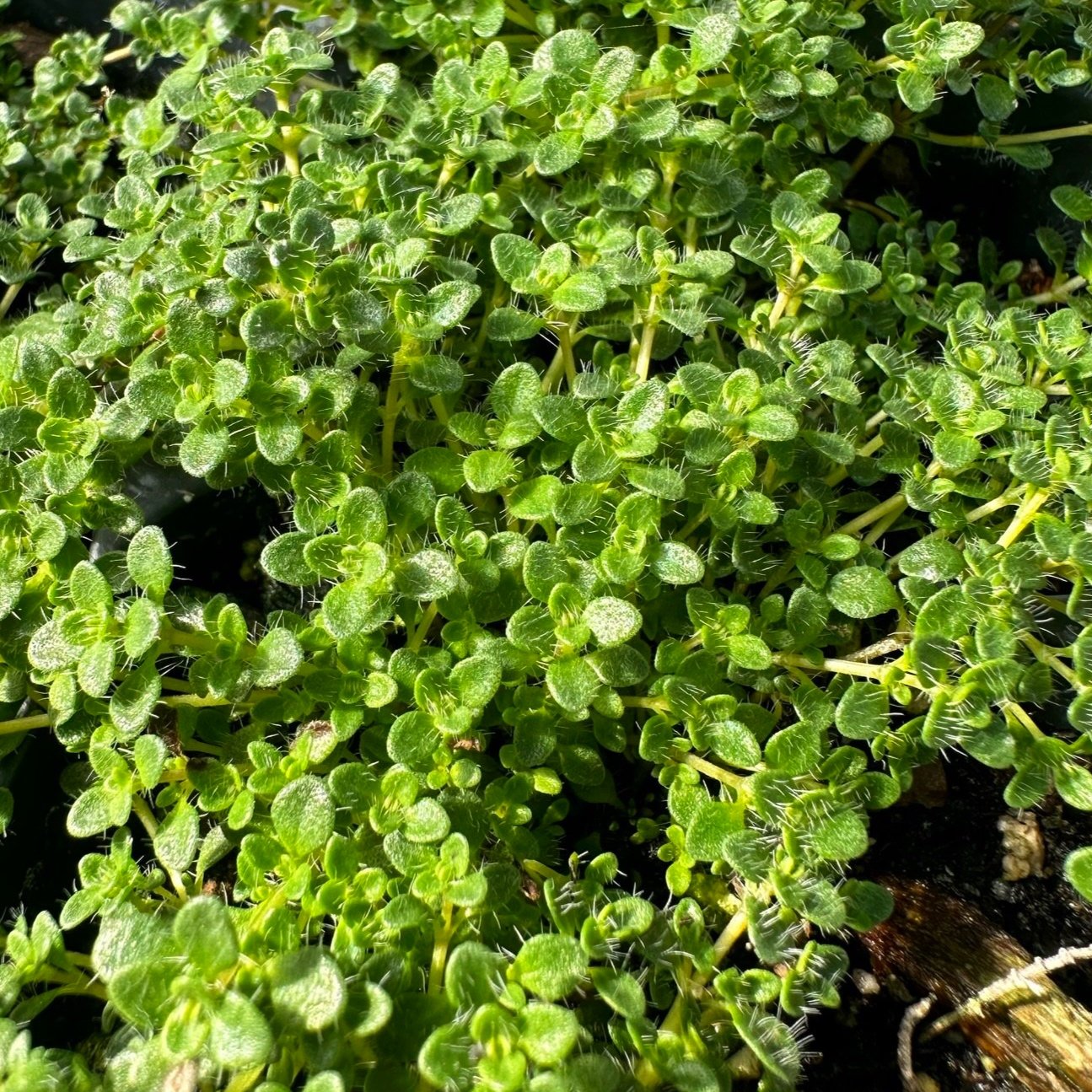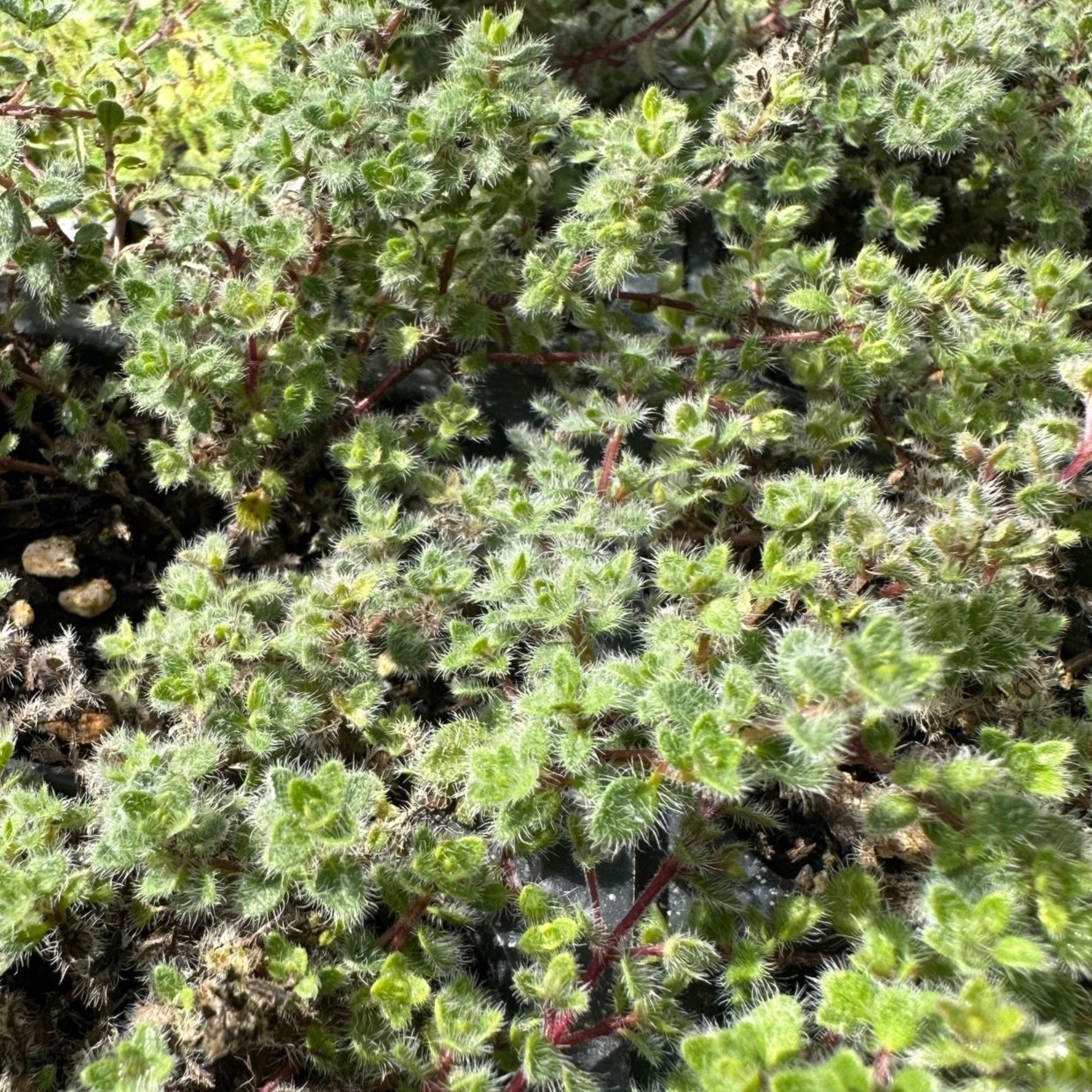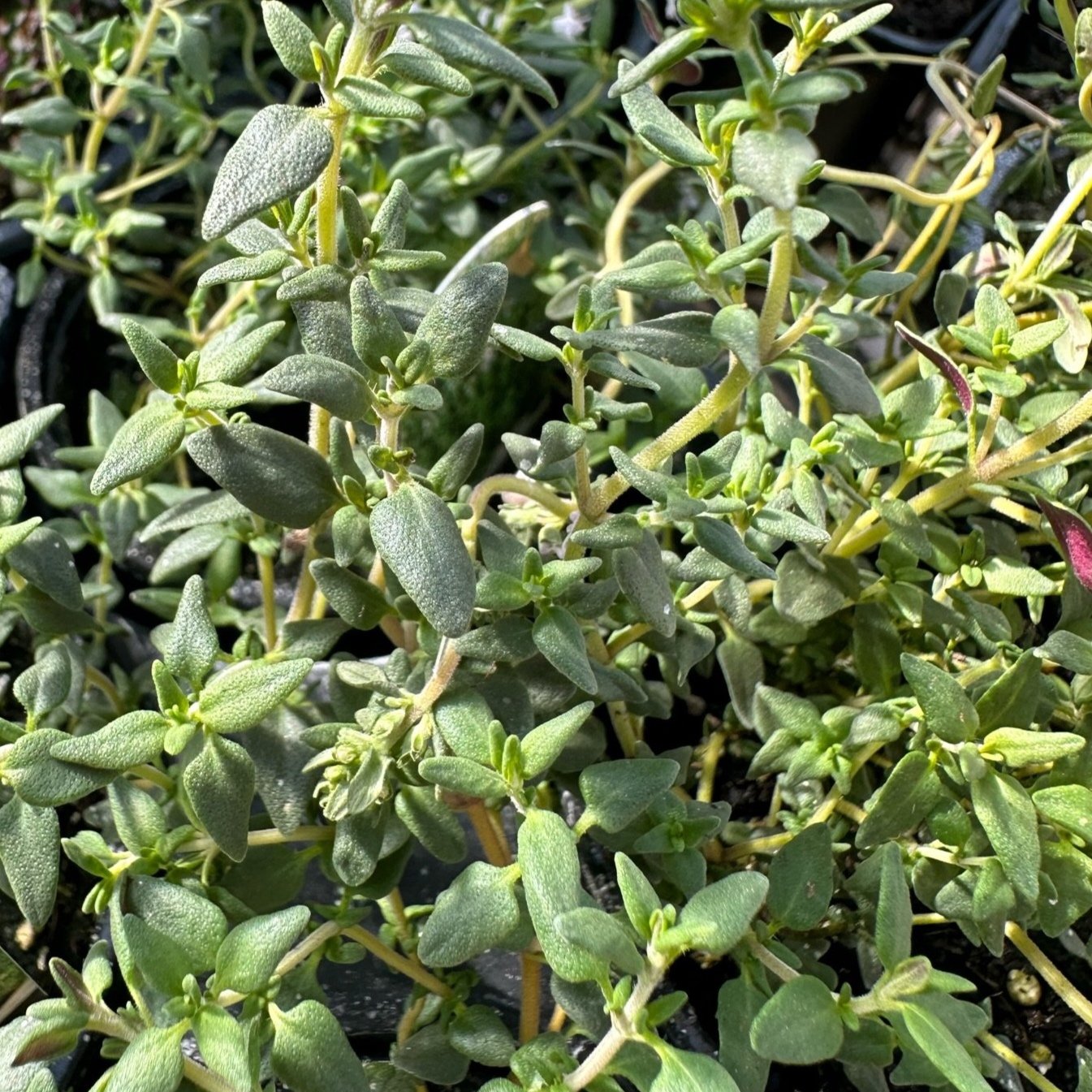Thyme, Thyme, Thyme – is on Your Side
Thyme (Thymus) is a versatile and aromatic herb cherished as a lush groundcover and delicious culinary herb. It creates a carpet of foliage year-round and is covered with masses of flowers ranging in shades of white, pink, and purple. Attractive to pollinators, thyme is an great addition in bee and butterfly gardens and is drought tolerant once established.
Let’s delve into thyme and discuss the key factors to growing it in both the garden and containers.
Below are some of the varieties we carry. Stock may vary at any given time based on the availability of our growers.
Ground cover Thymes
Some varieties are better suited as a groundcover for a large area, while others may be better used between stepping stones. Some create very tight mats with densely placed, small leaves, while others grow taller and have leaves spaced further apart. Depending upon your objective, it is important to note the height and spread of the different varieties when selecting thyme. They can typically take light foot traffic, but other strategies may be better suited for higher traffic areas.
Elfin Thyme (Thymus serpyllum): With its creeping habit and delicate, tiny leaves, elfin thyme is a charming addition to rock gardens, pathways, or between stepping stones. It thrives in well-draining soil and partial to full sun exposure. (Grows 1/2”-1” x 12”)
White Thyme (Thymus serpyllum ‘Albus’): This variety boasts silver-white foliage, adding a touch of elegance to any landscape. Ideal for edging garden beds or cascading over walls, white thyme requires similar conditions as elfin thyme, preferring good drainage and plenty of sunlight. (Grows 3”+ x 12-18”)
Wooly Thyme (Thymus psuedolanuginosus): Known for its fuzzy, gray-green leaves, wooly thyme creates a soft, textured carpet perfect for pathways, slopes, or banks. It appreciates dry, rocky soil and thrives in sunny locations, making it an excellent choice for xeriscaping projects. (Grows 1/2”-1” x 12”)
Herbal Thymes
Each of the following types have distinct flavor profiles and are used in cooking throughout the culinary world.
English Thyme (Thymus vulgars): Renowned for its robust flavor and aromatic leaves, English thyme is a staple in Mediterranean cuisine. It thrives in dry, well-draining soil and enjoys full sun exposure, making it an excellent choice for both culinary and ornamental purposes. If you have an option to buy the variety ‘Faustinoi’, do it! This is the most flavorful selection. (Grows 8” x 12-18”)
Silver Thyme (Thymus x citriodorus ‘Argenteus’): With its silvery-gray foliage and subtle flavor, silver thyme adds both visual interest and culinary versatility to herb gardens or mixed planters. It prefers well-draining soil and thrives in sunny locations. (Grows 6-12” x 12-18”)
Lime Thyme (Thymus x citriodorus ‘Lime’): Similar to lemon thyme but with a tangy lime scent, this variety brings a refreshing twist to culinary creations. Like its lemon counterpart, lime thyme requires fertile soil and ample sunlight to flourish. (Grows 6”+ x 12”+)
Lemon Thyme (Thymus x citriodorus): Infused with a citrusy aroma, lemon thyme is a culinary delight, perfect for flavoring fish, poultry, or beverages. It prefers fertile, well-draining soil and thrives in full sun, making it a staple in kitchen gardens or herbaceous borders. (Grows 6” x 12”)
French Thyme (Thymus vulgars ‘French’): Characterized by its small, dark green leaves and intense flavor, French thyme is a must-have herb for gourmet dishes. It prefers lean, well-draining soil and thrives in sunny locations, making it an essential addition to herb gardens or container plantings. (Grows 6” x 12”)
By understanding the unique characteristics and requirements of each thyme variety, you can harness the magic of these enchanting herbs to enhance your landscape, culinary creations, and container gardens alike.
Growing Culinary Thyme:
Cultivating culinary thyme requires attention to detail and an understanding of its preferred growing conditions. Here are some key practices:
Sunlight and Soil: Thyme thrives in well-drained soil with plenty of sunlight. Plant it in a location where it can receive at least six hours of sunlight per day.
Watering: Thyme prefers moderately dry conditions once established. Over-watering can lead to root rot, so it's essential to allow the soil to dry out between waterings.
Pruning / Harvesting: Harvest thyme as needed, but avoid harvesting more than one-third of the plant at once. This allows the plant to continue growing and producing new foliage. Regular harvesting encourages bushier growth and helps maintain the plant's shape. Trim back the stems after flowering to promote new growth.
Fertilizing: As with most culinary herbs, the flavors will be intensified with proper growing techniques. Fertilize infrequently, only as needed to keep the plant looking healthy.
Growing ground cover Thyme:
Ground cover thyme offers more than just visual appeal; it also helps suppress weeds and retain soil moisture. Here's how to cultivate ground cover thyme effectively:
Spacing: Plant ground cover thyme closer together than culinary varieties to create a dense mat of foliage. Spacing will depend on the specific variety and growth habits.
Weed Control: Once established, ground cover thyme competes well with weeds. However, it's essential to keep the area weed-free during the initial establishment phase.
Watering: While ground cover thyme is drought-tolerant once established, it may need regular watering during dry spells, especially in hot climates.
Propagation: Ground cover thyme can be propagated through division or stem cuttings. Divide established plants every few years to rejuvenate them and maintain vigor.
Maintenance: Trim back any overgrowth to maintain the desired shape and prevent the plant from becoming too leggy. Avoid cutting into old wood, as this can hinder new growth.
Growing Thyme in Containers
Here are the key factors to consider when growing any variety of thyme in containers.
Choose containers with adequate drainage holes to prevent water-logging.
Use a well-draining potting mix with added perlite or pumice to improve drainage.
Place containers in a sunny location, ensuring plants receive at least 6-8 hours of sunlight per day.
Water regularly, allowing the soil to dry out slightly between waterings.
Fertilize container-grown thymes sparingly with a balanced fertilizer during the growing season.
Prune regularly to maintain shape and encourage bushy growth.






